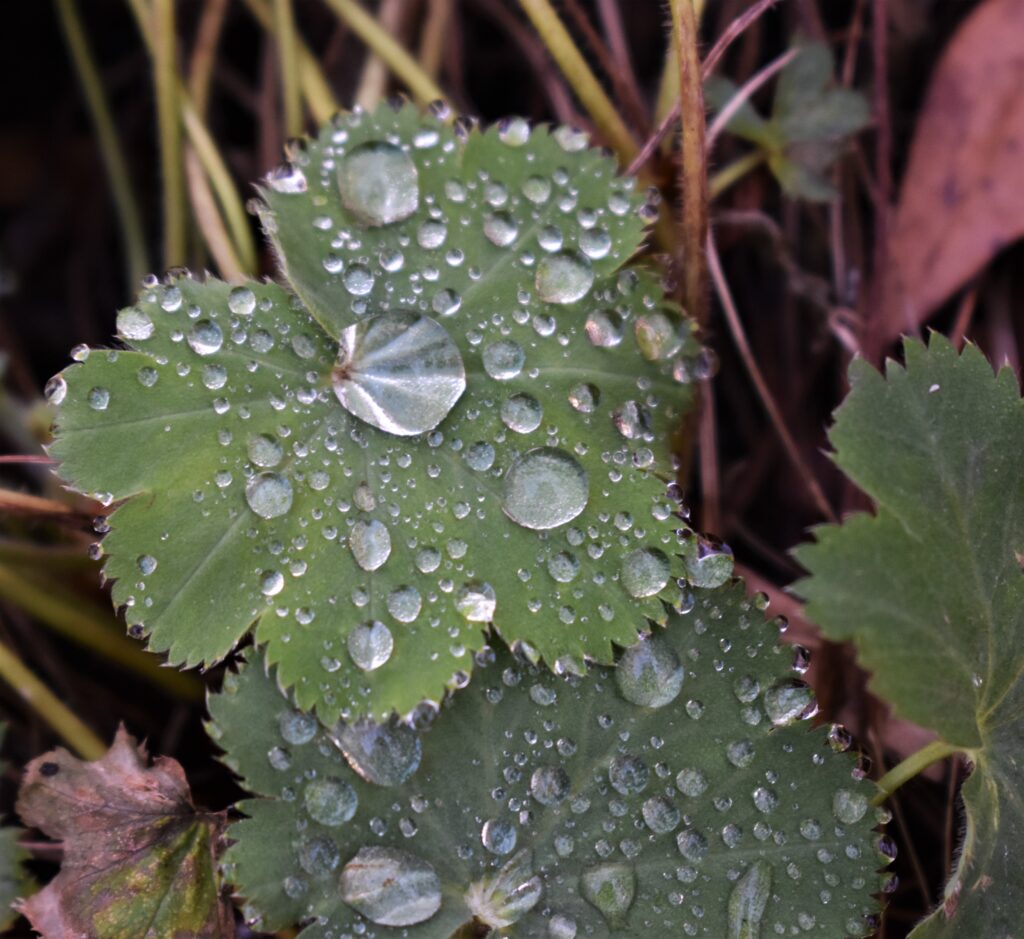Latin Name: Alchemilla vulgaris
Common Names:
Our Ladies Mantle, Mary’s Mantle, Mary’s Palm, Bear’s Foot, Dew Cup, Duck’s Foot, Elf-Shot, Lamb’s Foot, Lion’s Foot, Nine Hooks
Parts Used: Flowering aerial parts, root
Actions of Note: Wound healing, Skin soothing, Menstrual and Childbirth Support
“In the night it closeth it selfe together lyke a purse, and in the morning it is found ful of dewe.”
William Turner, 1568
“…because the hollow crumplings and the edges also of the leaves will containe the dew in droppes like pearles, that falleth in the night.”
John Parkinson, 1640
December is a good time to walk your gardens and make note of your “full hardy” plants (the ones that have not died back to the ground – staying green all year round). It is of wise habit to keep a running list in your garden calendar to modulate your harvests from June thru October – leaving some of these “full hardy” plants for later.
A favorite “full-hardy” edging, ground cover perennial of mine is Lady’s Mantle, Alchemilla vulgaris. This nine-serrated lobed leafed herb with frothy sprays of small yellow flowers is native to Europe, northwest Asia, Greenland, and northeastern North America. It can be found growing in damp grassland, open woodland, and on rock ledges. It grows in both sun or partial shade – but, does not like water-logged soil. It can be grown from seed or division – self-seeding freely, although I have not seen that in my gardens.
The Arabic word “Alkemelych” (alchemy) was thought to be one origin of its Latin name (because of its medicinal uses). An alternative explanation is related to the leaves of the herb, which came to the attention of those seeking the mystical properties of plants, their ability to hold teardrop-shaped droplets of dew in their folds gave the plants its Latin name of Alchemilla, meaning magical one. Its common name refers to the resemblance of the leaves to a lady’s cloak (mantle) – a medieval observation. One folk tale tells that placing a leaf of the herb under your pillow will induce “sweet slumber.” Traditionally, the plant has been used for obesity and is now thought to aid in weight loss.
In days gone by, dew from plants was considered a powerful substance and Lady’s Mantle a powerful, “magic-working plant” with a reputation as the “little powerful one,” “the little alchemical one,” or “the little magical one.” For me, I tend to collect the youth-giving dew often – placing it into some of my herbal facial serums and lotions.
The young leaves can be chopped up and added to salads and vegetables. The infused dried leaves are used as an astringent and facial steam for acne. Making a cold infusion can be used as a compress on puffy eyes. Due to its tannic properties, it will produce a bright green dye for wool.
Medicinally, the plant is held in high esteem. It is known for its use in treating menstrual problems and for strengthening and healing before and after childbirth. Its pain relief qualities come from the action of the salicylic acid contained within the plant. You can also use dried leaves to prepare mouthwash.
Historically, it is one of the singular anti-inflammatory wound herbs and highly prized and praised for use in all wounds inward and outward – to drink the decoction thereof and wash the wounds therewith and dip lint therein and put it into the wounds.
We will be studying this herb deeply in 2021 within the P3 Exchange (see above tab) and will be talking about it within the “Walk Through the Seasons” Private Facebook Group opening up in January 2021.

